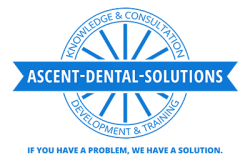Understanding costs are key to growing your dental practice
 As the man behind Dentaltown Dr. Howard Farran is easily one of the most recognized names in our industry. He’s a dentist, an MBA, and an international lecturer. More importantly he understands what’s important to our profession, not only clinically, but business wise.
As the man behind Dentaltown Dr. Howard Farran is easily one of the most recognized names in our industry. He’s a dentist, an MBA, and an international lecturer. More importantly he understands what’s important to our profession, not only clinically, but business wise.
You can be the best clinician in the world, but if your business skills aren’t developed then you will always struggle.
Farran’s business acumen is something that was baked into him from a very early age.
“I had an extremely lucky childhood. My dad was dirt poor and when I was ten years old, he saved up his money and bought a SONIC Drive-In franchise,” he says.
“He went from making like $11,000 a year to $60,000 his first year, then he opened up another SONIC every year for nine years. We went from dirt poor to living in the wealthiest area of Wichita, Kansas in United States.”
“The church we attended also had the founders of Pizza Hut, Dan and Beverly Carney, and the Shah family that started Godfather’s. So when I was a little kid and went fishing, I would sit next to my dad who had nine restaurants, Roger Carpenter who had 100, Jim Williams had 1,000, Roger Carpenter had 2,800 and there was a lot of takeaways from growing up with these guys.”
“By the time any of them had five employees, one of them was a fulltime bookkeeper. All they did was master their costs.”
Farran takes these lessons from legendary American business people and applies them to the dental industry.
“I hired a bookkeeper when I started out,” he says. “She’s now the president of my company and makes $200,000 a year. It’s all about cost.”
“Most dentists don’t know their costs. They have practice management information systems like Dentrix and Eaglesoft, but they don’t even have accounting software!”
“So dentists go through the day managing people, time and money. All their costs are incurred in time, but they bill in units. The only thing that matters is what does that room cost for an hour and how much production do you do in that hour.”
Farran thinks of dentistry like an airline.
“Southwest Airlines takes 100 percent of all their cost and reduces it to one airline seat flying through the sky for a mile. If that chair takes off in Boston and flies to my house in Phoenix – even if no one is sitting in it – it still has costs. That plane is not being flown by the tooth fairy, it’s not being pulled by magic fairy dust, it has costs. Too many dentists don’t even know what an operatory costs!”
But even beyond the physical location, a bookkeeper will be able to show where to find efficiencies in the practice. “The receptionist might book an hour for two fillings. She doesn’t even know what it is, then she books some lady to come in for a cleaning for an hour, she’s getting $55 for the cleaning and the hygienist is getting $40 and these dentists don’t even know they’re in quicksand. You have to hire a bookkeeper at every position you have.”
According to Farran, it’s this lack of financial literacy that makes it so hard for new dentists and even established dentists to maximize their earning potential.
“The average dentist is signed up for about 12 to 15 different PPO plans,” he says. “They have no idea what they are getting paid for any procedure, no idea what the room costs. But the receptionist is scheduling the only cost as time.”
When a dentist finally understands the overhead costs, can they truly see how to make their practice more profitable.
Farran puts it very succinctly when he says “If your room costs $200 an hour and you put in $145 MOD, you just sent a $50 bill through the shredder.”
Understanding costs is the key to making any business successful. Wishful thinking and hopeful guesses are a recipe for financial disaster.



